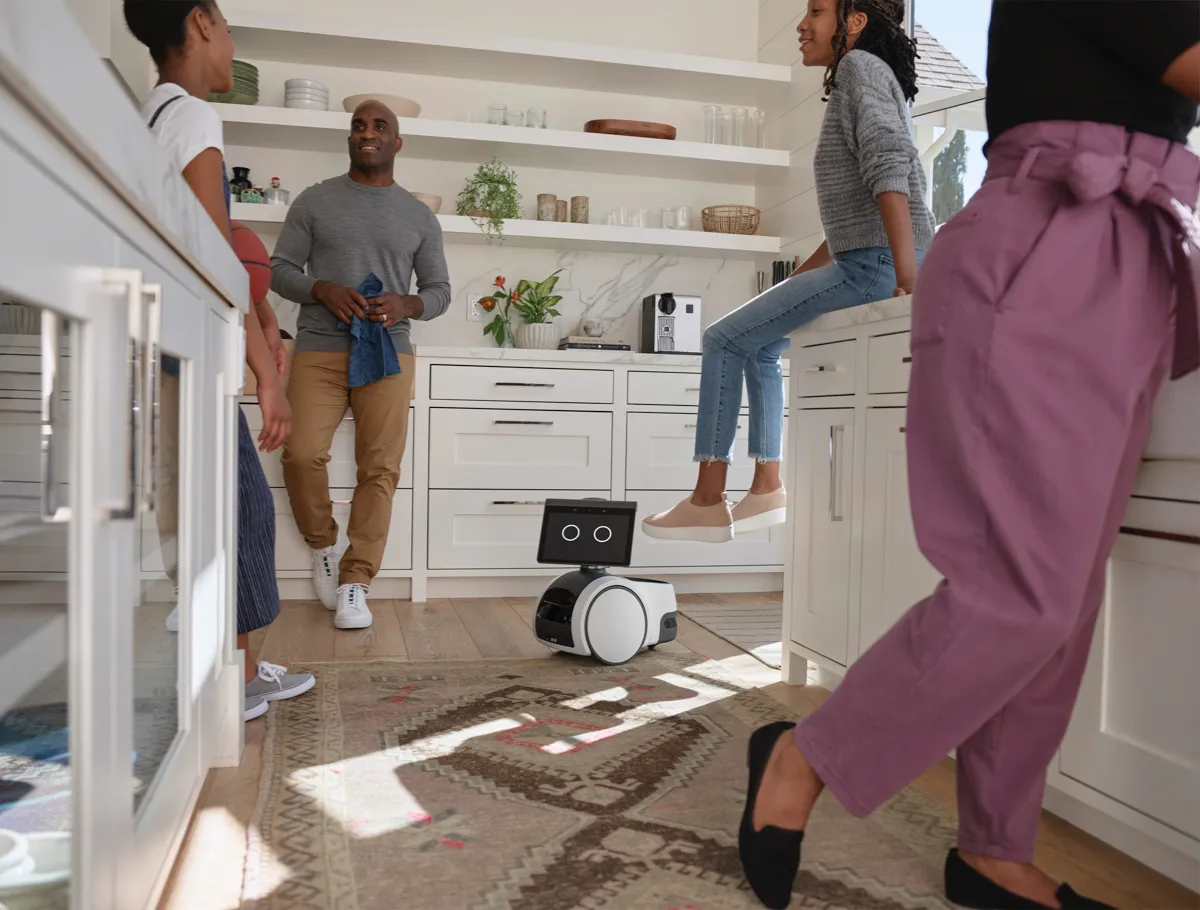Multinational tech giant Amazon recently released a household robot named Astro. The robot, currently available by invitation only, puts Amazon’s virtual assistant, Alexa, onto a dog-sized body with wheels that roams around your living space. Astro’s primary function is home monitoring and security. But just like real dogs have gone from guarding our houses to being part of the family, the raison d’être for household robots may eventually become companionship.
Futurists have long promised the advent of robots in our living spaces, but so far, home robots have been fairly limited. Single-task devices like robot vacuums are popular, as are the virtual assistants that sit on our desks as speakers. But Hollywood’s vision of all-purpose robot aides, caretakers, and sidekicks remains elusive. A few companies have tried to launch more general robot companions for the home, but without much success.
There are a few reasons why the home robot landscape is still so barren. One is cost, another is expectations. Science fiction, pop culture, and misleading product videos have given consumers the impression that robots are more talented and capable than the current state-of-the-art can deliver. Adding to that, reliable, safe, and useful robots are still difficult to make, and that means they’re expensive - more expensive than most people are willing (or able) to pay.
These barriers, while very real, are temporary. The costs are decreasing, and interactions with robots will be less disappointing as the technology develops. For example, recent breakthroughs in language learning models will soon enable much more satisfying conversations with AI agents. But another challenge is figuring out what home robots are for. After all, consumers need a reason to want them.

Amazon is pitching Astro as a home security robot. Owners can use Astro’s cameras to peek around while they’re away, connect the robot to other security devices, like the Ring camera, and even have Astro patrol an area for unidentified people. Astro isn’t the only home robot leaning into this use: last year, Amazon announced a flying drone that pairs with their security system to monitor your domicile.
This selling point is worrisome. Robots, equipped with cameras, microphones and sensors, have the ability to send information back to their companies. This data can be shared with law enforcement, advertisers, and other third parties. Many robots also use facial recognition, which is known to embed racial biases. But even if companies like Amazon put steps in place to protect user privacy, home surveillance simply isn’t the ideal application for a robot like Astro.
Astro, named after the dog in the classic science fiction cartoon The Jetsons, is also built to interact on a social level. It has animated eyes, makes adorable sounds, and has killer dance moves. It’s no small feat to design these features. Which begs the question, what value does that investment capture? Today, social robots that are predominantly intended as companions still lack a major market because people don’t see why they would want one. But for those of us who work in human-robot interaction, it’s clear: people can value a robot primarily for its companionship.
Take Jibo, a social robot launched in 2017. When the Pixar-lamp-reminiscent countertop robot couldn’t make it commercially, many people who had a Jibo in their lives found themselves, without exaggeration, emotionally devastated. They wrote letters, formed communities, and grieved the loss of their robot friend. The response showed that a home robot, initially purchased as a fun product, can become much more. What’s still missing is exposing a critical mass of people to these devices.
If you worry that this means replacing human friends, consider pets. Animals are our companions—not as a replacement for other people, but as a supplement. And interestingly, before dogs became our snuggle buddies, they had a different job. It turns out that guarding the home was an easier sell than convincing people they needed a lap puppy. Over time, dog-ownership moved away from this practical justification, and canines became part of the family.
Similarly, the use for home robots may change over time, as people purchase technology to solve a problem, and discover a companionship they didn’t anticipate. These relationships could be useful: loneliness, a major societal concern, is correlated with early mortality and a slew of mental and physical health problems. Neither animals nor robots can fix societal issues, but they might help individuals feel a little less alone.
That said, dogs don’t tell others your secrets, so one can only hope that companies are willing (or compelled) to pivot away from mass data collection. It’s a tall order to ensure that the technology benefits society rather than corporate interest, but whether we like it or not, the era of robot companions is definitely coming.
Read more about robots:

